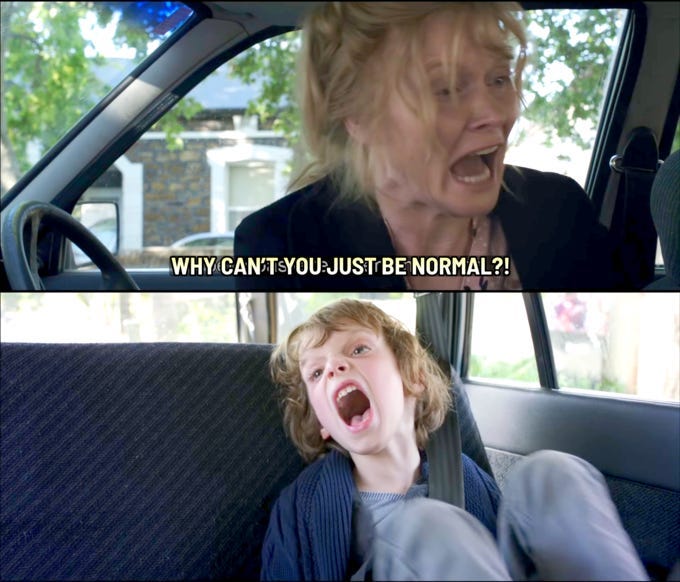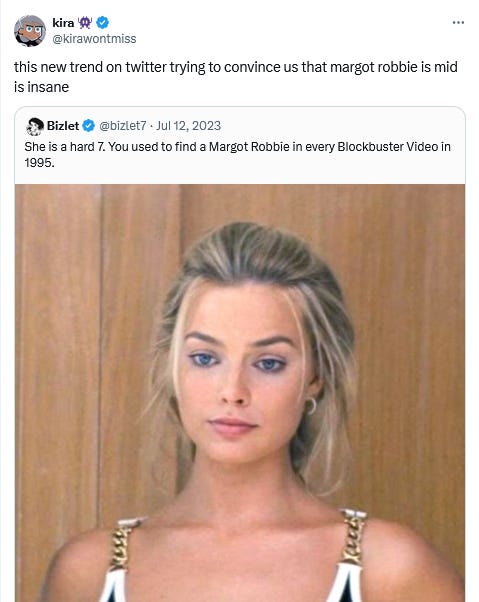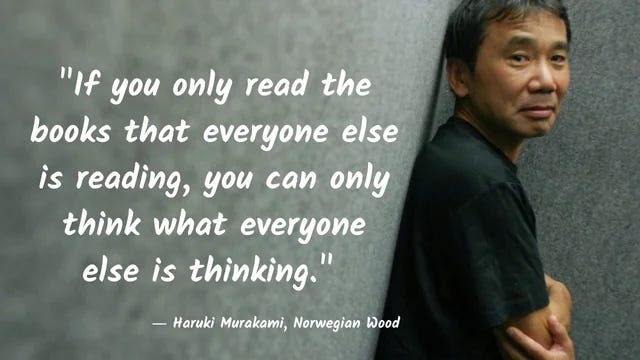Being normal and living a normal life is something I aspire to achieve one day. But I struggle to wrap my head around what is normal.
In this issue let’s discuss about the societal and mathematical aspects of being normal and if it is attainable.

“Normal is a majority state” said my favourite, not so normal author (Manu Joseph). This is true not only as an observation, but also mathematically.
Normal is an average of the entire spectrum. Throughout our life, we come across and interact with a wide variety of people. The net average of all of them and their behaviour is what we consider as “normal”. This is a good representation of normal in most cases.
So, as long as you’re doing what most others are doing, you’re normal. Simple, right? Well, not quite…
For as long as I can remember, I’ve been categorized as a quiet kid. But in my opinion, that should be normal. Like most normal kids, I went to school, and just like any other normal school, all the students were instructed to not talk, but to listen actively and only speak when prompted to by the teacher. So, I couldn’t understand why people were commenting that I talk less. Talking less and listening more was normal to me in my normal school environment.

That’s not the only time I deviated from what society considered to be “normal”. I veered off from the path at 18. The same age at which the government of India gave me the right to vote, I voted against being normal and chose to pursue a degree other than engineering or medicine.
That was the day I waved goodbye to any chance in a normal life. Because, statistically, the most normal thing to do as an Indian is to get an engineering degree. Approximately 1.5 million Indians graduate with an engineering degree every year. And most of them get placed in one of the five major Indian tech companies (TCS, Infosys, Wipro, Tech Mahindra and HCL) working 50 hours per week and management is now trying to normalise 90-hour work week. All this for an average first year salary of ₹3.5 Lakhs ($4,000) per year.
Pretty normal stuff until we see that in developed parts of the world, it is normal to work only 40 hours a week (and for a much higher average pay!)
Why would anyone choose this normal life when it is so unfavourable? It’s because we’re tribal. We like to form groups and evolutionarily we know that sticking together increases our chances of survival. Once most people do something, herd mentality kicks in and we’d hate to miss out. So, even if it is not the best option, we choose to follow the crowd and be a part of the tribe rather than sticking out.
This isn’t the complete picture. What we call average also depends on the data we consider and what we compare it to. The best way to visualise averages is by using a normal distribution/Gaussian curve, which is a symmetrical, bell-shaped distribution where most data points cluster around the middle, with fewer points occurring further away, as defined by standard deviations. In simple terms, the large peak is the average of the data. (Read to the end for a sneaky insult!)
Let us look at the NEET 2024 result analysis. The graph compares the distribution of scores throughout India (dashed-black line) and top 5 centres (solid-coloured lines)

Overall, the average score is low, in between 0 and 200. But when we consider the top 5 centres, the average is around 600.
Thus, a student who got a score of 300 is above average if we consider the whole country but is below average if we consider him among the top 5 centres.
Another example is the “right amount of spice or sweetness in dishes.” It changes from region to region. In Karavali, it is normal to have less sugar and get the taste the bitterness of coffee. In North Karnataka, so much sugar is added that coffee tastes like coffee-coloured sugar syrup (not an exaggeration). And food in Shivamogga is so spicy that it feels like chili powder is the only spice they use (again, not an exaggeration). But for the respective locals, that level of sweetness and spiciness is normal.
These two examples perfectly drive home the point of what we consider average being influenced by things in our proximity and what we consume.
Speaking of consuming, the thing we consume the most is media, and media influences what we call as normal. Being exposed to party culture online and in movies constantly makes us feel partying every weekend is normal, while it wasn’t a few years ago.
Being exposed to so many beautiful people online also skews our perspective of what we consider as average beauty. A discussion on erstwhile twitter calling Margot Robbie “mid” comes to my mind.

You might think that these are few one-off cases and it isn’t the norm, we are informed about everything that happens in the world so our dataset should encompass a wider range and thus obtain a better average than earlier.
Yes, technically you can access the world’s entire information, but do you?
We let algorithms decide what to feed us. Social media algorithms are tuned to get more engagement and keep you hooked. If you’re reacting to a certain kind of content, you’ll be given more and more of such content, thus narrowing your perspective to tunnel vision. Thus, your idea of what is normal is no longer normal!
This is exactly why Facebook got into trouble in 2018, for polarizing people on politics using algorithms and targeted advertising. I’ve seen my friends fall for this, the ones who were moderate ending up being polarized and unlike their previous self. And they’re so far gone that all the atrocities that are pushed into their feed are normal to them now and they refuse to believe otherwise.
The internet offered us something sacred — unconditional freedom and liberty. Compared to the regulated TV and radio, internet in its early days and even now for the most part — is an open ground where you are free to do whatever you want to do. But with freedom comes inconvenience. You have to hunt for your content. Watching TV and listening to the radio were passive. You just had to tune into the channel or the station and the pre-curated content would play for us to consume.
Now, we’re going back to that state. Gone are the days of adding friends, following, subscribing and searching for what you want to consume. Now algorithms determine what you want to watch for you. We’re letting go of our freedom for convenience.
Yes, but what does it have anything to do with being normal? EVERYTHING!
We’re letting algorithms of social media platforms to determine what is normal to us.

Instagram sets unrealistic beauty and lifestyle standards; According to LinkedIn, starting a company and being in Forbes 30 under 30 is normal; X shows that people are barbarians who are just waiting for opportunity to pull each other down and argue.
And it’s not just that, it knows your close circle and shares the same content to them. I have observed that most of the content which my friends usually share with me, is already shoved down my throat by the algorithm before they share it to me. The same is true other way and we keep saying “I’ve seen this” to each other when we share something to each other.
Social media algorithms promoting the same thing to everyone strips us off from our individuality. And not to mention removes the fun of discovering something new when a friend recommends something.

Feeding everyone the same information can have huge consequences. It can influence people to do things that wouldn’t normally do. Teens were influenced to hurt themselves by Blue Whale challenge and the tide pod challenge only because these were being shown to them frequently and they were convinced against their better judgement that these were normal because they kept seeing it.
And my most serious gripe with algorithm is that it doesn’t let me be sad! I have observed it numerous times. Whenever I play a sad song on YouTube Music, the auto-play slowly turns the songs to be cheerful. I have fallen asleep many times to sad songs only to wake up to upbeat pop music in the morning. I appreciate that the algorithm wants me to be happy but what if I wanted to feel sad? The algorithm won’t let me.
An interesting property of any paramagnetic material is that in the absence of external magnetic field, the magnetic moments (denoted by arrow marks in the below diagram) are all randomly oriented resulting in a net or average magnetic moment of zero. But when an external magnetic field is applied, all these magnetic moments start aligning in the direction of the field.

In an ideal world, everyone is unique like the magnetic moments of a paramagnet and everyone should have a unique trait and thought process, making the average zero. But we are all influenced by something external, we start aligning with others and join the herd.
The external influences keep on changing. Right now, it’s algorithms; earlier it was television and radio; before that it was books, newspapers and magazines; before that it was gossips by the town square.
I believe being normal is something that can’t be achieved, but ends up happening to us when we give up on choosing the things that influence us and let the larger forces influence us.
Thanks for reading to the end! As a reward, here's a sneaky insult disguised as a compliment: 'You're right on top of the Gaussian curve.' It sounds impressive, but it actually means you're perfectly average, since the peak of the Gaussian curve/ Normal distribution represents the mean or average.
And yes, it works!
If you liked this week’s issue, consider subscribing, it’s free!









